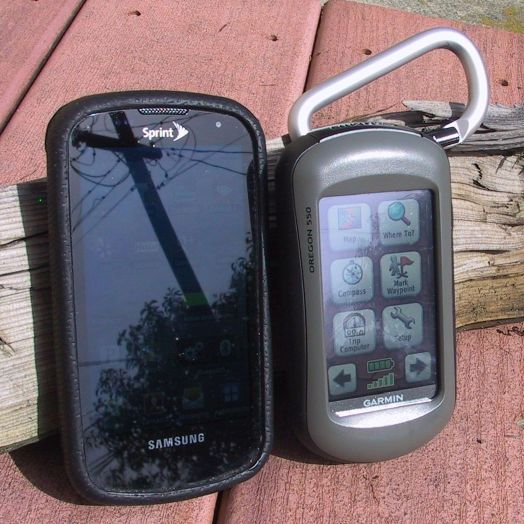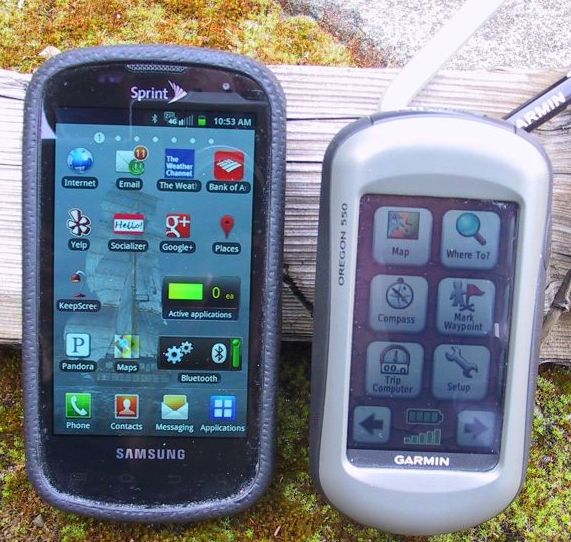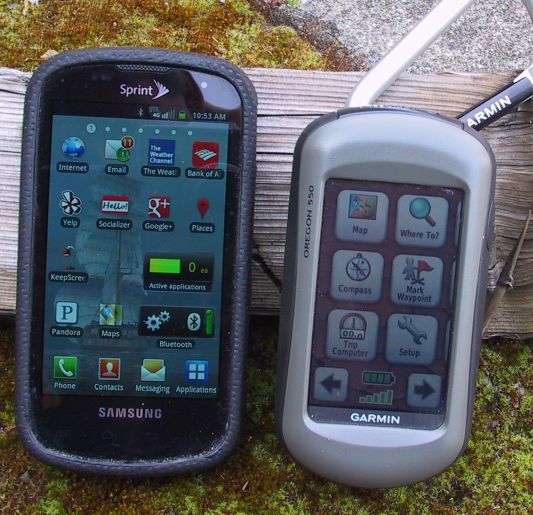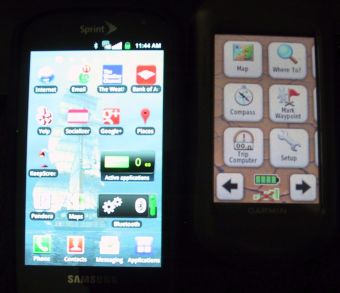"Transflective" vs. AMOLED ... Garmin vs. Samsung
For a while, I've been interested in the new generation of so-called "transflective" displays, such as the
Pixel Qi display.
Transflective displays have a dual mode of operation - backlit like conventional displays, or
reflective like the "e-ink" type displays found on ereaders like the Kindle.
The great advantage touted for these things is readability in all light conditions. As we all know,
conventional screens on phones, tablets, laptops, netbooks and other performers in the mobile device circus
often become nigh unto unreadable in bright sunlight. Conversely, a purely reflective display in a dim room is
equally unreadable. The transflective display can operate both ways and adapt.
I'm also interested for another reason. One reason I've resisted ereading is that I HATE doing pleasure
reading or reading of a lengthy document on a backlit screen. It's funny - I'll do interactive stuff on a
computer all day without complaint, but I do NOT want to read a novel in glowing text being pushed into my face.
Thus, I'm not about to read books on a tablet with a normal backlit screen. If I'm willing to spring for a tablet, I also
can't justify buying a special purpose "ereader" with an e-ink display. I'm hoping that I can eventually
get a decent tablet with a transflective display. An early entrant, the
Notionink Adam, looked interesting,
but seems to have some serious drawbacks and quality issues according to reviewers. I'm watching for these displays to
mature, as they start appearing on mobile devices.
Anyway ...
I bought myself a new GPS unit for hiking -
a Garmin Oregon 550,
which touts its "transflective color TFT touchscreen". My purpose here is not to review
that device (I like it - leave it at that). I'm just going to compare the screen against my smartphone
screen, an AMOLED display on a Samsung Epic 4G from Sprint(rebadged Galaxy S). This is generally regarded as a good
display - bright and sharp. Can give the iphone displays of the same vintage a run for their money.
To be fair, the Smartphone display is twice the linear resolution and somewhat larger:
| Unit | Physical Screen Size | Resolution |
|---|
| Garmin 550 GPS | about 65 x 40 mm | 400 x 240 |
| Epic 4G | about 80 x 50 mm | 800 x 480 |
That's not what we're comparing here. We're interested in the visibility in indoor/outdoor light conditions.
Both units have their screens set to max brightness for these photos. Since the Garmin GPS is "transflective", you can
read it without the backlight on.
Direct Sunlight, Garmin not backlit
Impossible to get a picture without reflection off the glass. DOES illustrate that you can read the
Garmin's display and it's pretty much impossible to see a bloody thing on the phone screen. In direct sunlight,
there's not much visible difference between backlit and not.
|
 |
Outdoor shade, Garmin not backlit
The phone is much brighter, but you can still read the Garmin display. Presumably, this means the Garmin isn't drawing as much power
for the display as it would backlit.
|
 |
Outdoor shade, Garmin backlit
The phone is a brighter display, but they are closer now. The picture is darker overall because of this. The important thing is
the relative comparison of the two screens.
|
 |
Indoors, Garmin backlit
Fairly dark room (blinds drawn). Both readable. Phone, again, is a brighter display. Taken handheld without flash, so it's a
bit fuzzy, and the actual units don't show up, only their screens.
|
 |
Overall, I find it encouraging. I still want to get my hands on a tablet with a transflective display to check it out, which means
"read a book on the thing in direct sunlight".



